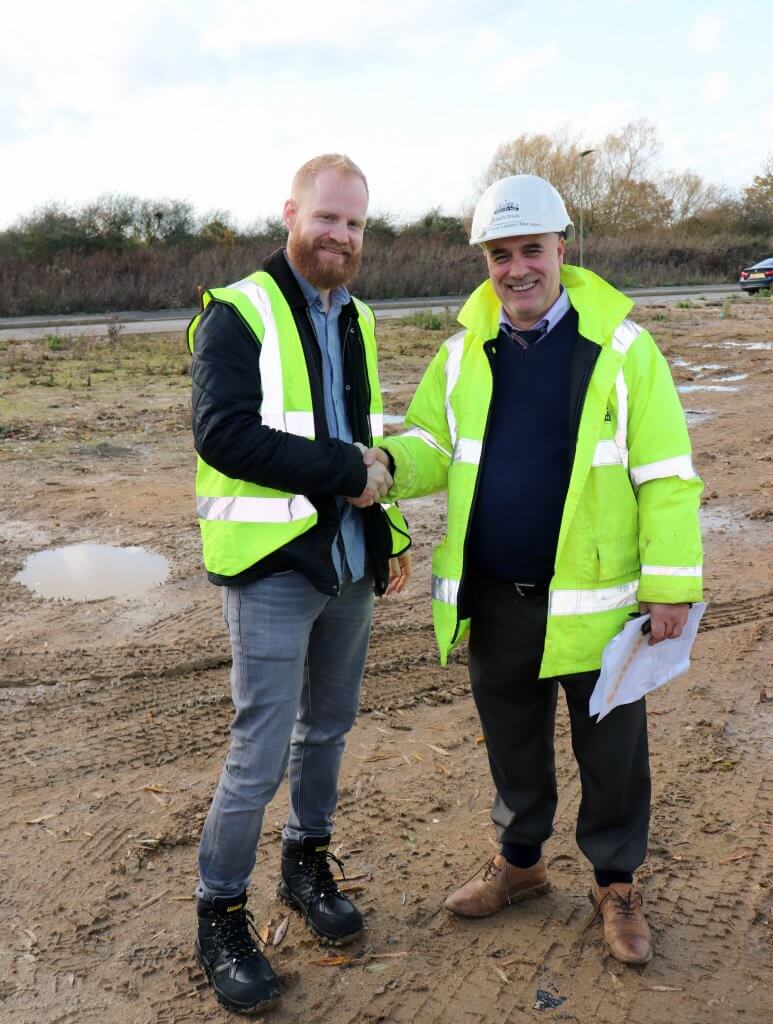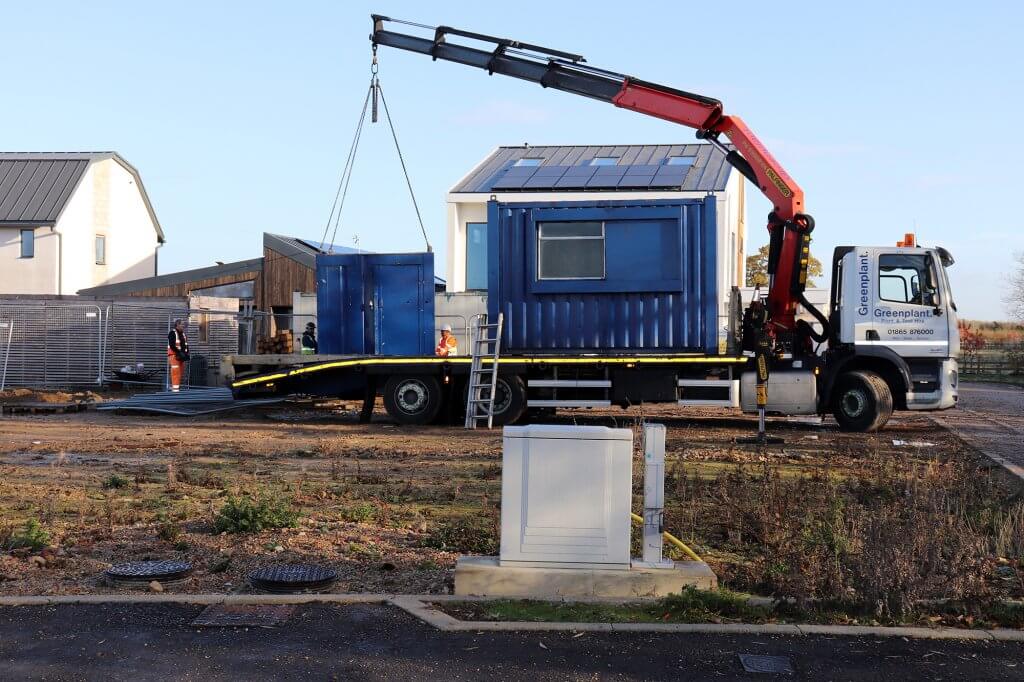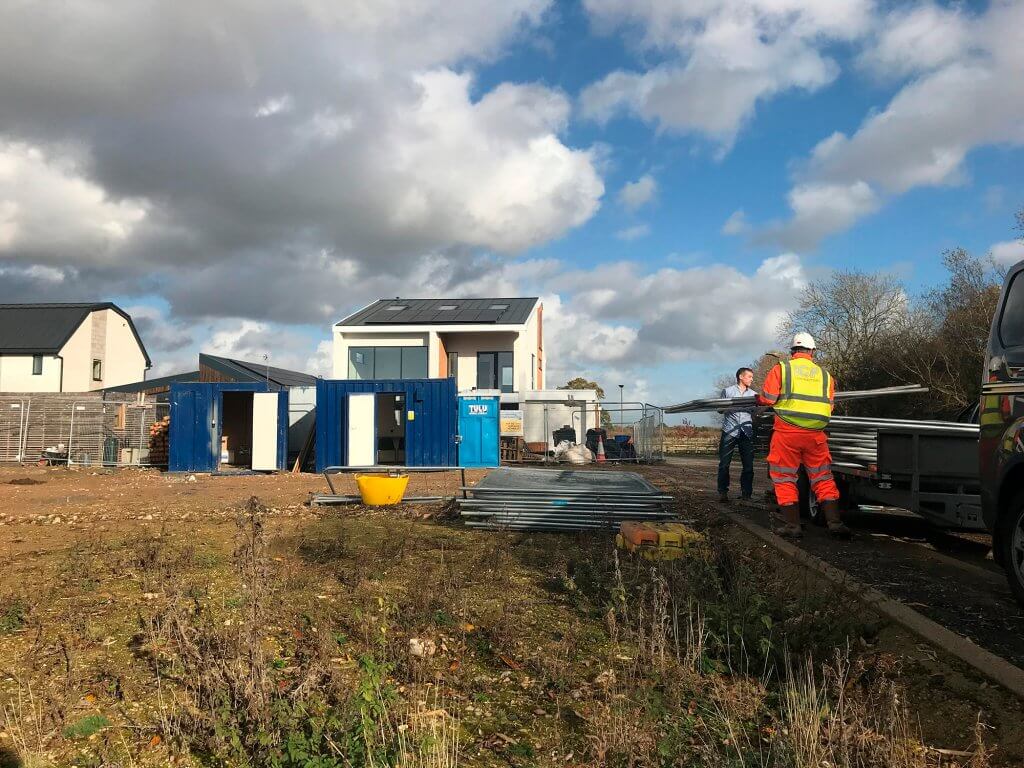
Learn from the experts TONIGHT with our online training course!
Use the code BUILD for 20% off
Learn from the experts TONIGHT with our online training course!
Use the code BUILD for 20% offAfter months of planning – which with any luck will stand us in good stead during the construction phase – we finally managed to get work for Build It’s Self Build Education House started on site in November 2018.
The first day your crew takes up tools is a momentous one. This is the point at which your new home begins to move from dream to reality. And if you’re managing your own project, you’ll be fielding plenty of questions.
In this instalment I’m going to look at the plot handover process and the preliminaries we needed to get sorted early in our project – including the temporary works that are required for our basement excavation, and some of the lessons we learned along the way.
On a traditional self build project, there’s a fair amount to sort out before you can bring the diggers in to carve out your new home’s foundations.
One of the biggest (and often most frustrating) tasks is arranging utility connections: you’ll need to figure out both temporary and long-term supplies early on.
In fact, I’d always recommend you get a firm quote from the network distributors before you even put an offer down on a plot. The cost of bringing in utilities can vary hugely, and you may need to reflect a high quote in the value of the plot.
Our project is on a custom build development, which makes things little more straightforward. Graven Hill’s serviced plot approach means these key provisions are brought right up to the site boundary for us. So all we needed to do was pay for the electricity meter connection and consumer unit – a much more straightforward process.
What is Build It’s Self Build Education House?The Build It House is a pioneering real-life project designed to give you a unique insight into the process of self building your own bespoke home. The Education House is being erected on Graven Hill, the UK’s largest custom and self build development (www.gravenhill.co.uk). We’ll be following the design and build journey both in the magazine and online – sharing the highs and lows of how a project comes together. Once it’s completed, the Self Build Education House will showcase the design possibilities and practical choices you’ll need to make over the course of your own scheme. You’ll get to see a wide range of innovative products in situ, from heat pump ventilation through to acoustic screeds, with cutaway panels demonstrating how they’re installed. The finished house will also featured detailed informational graphics explaining the decisions Build It made on this project and how different choices would have affected our construction schedule and costs. |
The self build sites at Graven Hill are provided on a golden brick basis. This means Graven Hill would normally deliver the plot with the foundations already built to your specification, ready for you to organise the above-ground works.
Our project is a little different, in that we’ve decided to add a basement storey.
So rather than using Graven Hill’s standard contractor, we wanted to make sure we had a team on board that was experienced in this kind of work – and in using the insulating concrete formwork (ICF) system we’ve specified.
Graven Hill agreed to appoint our preferred company, ICF Contractors, to carry out this phase of the Build It House – right up to completion of the basement shell. We expect this to take two months, including waterproofing and drainage. ICF Contractors will assume the role of Principal Contractor for health and safety throughout this stage of the works.
On the morning of day one of our build, I was keen to be on site for the handover from Graven Hill to the basement contractors.
When I arrived just after 8am, Graven Hill’s team were already busily setting out the plot boundary pins to confirm exactly where we could work (as shown in the main image above).
Ralph Driver, Graven Hill’s customer liaison manager, was in attendance and helpful in talking me and Vasile Hizanu from ICF Contractors through some of the key details we needed to confirm before the team could get cracking on the works.
Because we’re building a basement, we need to make sure we safeguard Plot 593 next door – even though it’s currently empty. We signed a license to occupy during this phase of the works, which includes a clause that any soil we remove must be reinstated to an engineer’s specification.
Ralph and I jointly inspected the condition of the existing kerbs on the road and agreed how many were damaged. We might be liable to replace these if any of our contractors or suppliers cause further damage – but we can safeguard against that by ensuring plant and materials deliveries come on over the kerbs that are already in poor condition.

Build It’s editor Chris Bates was on site with Ralph Driver from Graven Hill for the official plot handover to the Build It Education House basement contractors
Vasile was very keen to double-check the correct datum point for his team to work to. This is a fixed reference point from which levels and measurements can be taken – and is vital in ensuring the house can be built according to the plans. Ralph lived up to his job title, following up with an email the same afternoon to confirm.
By this point, we’d arranged for delivery of our welfare units – which are a necessity for health and safety purposes on any construction project that lasts longer than 30 days (or 500 person days).
Given we’ll have multiple trades on site over a planned nine-month building programme, we’re definitely going to exceed those thresholds!

We’ve been supplied two smaller welfare units, rather than the single large one we ordered. The price was the same, but we’ve had to pay an electrician more to connect up temporary services
There was a slight hiccup here, in that the hire company realised it had run out of the large single welfare unit we’d requested. We’ve ended up with two smaller ones at the same rate – although we had to pay the electrician another £350 to run an extra temporary armoured cable (one to each cabin).
Our first overspend has worked out well for the contractors, though, as they have a separate site office and rec room!
As with many builds, we’re securing the site with Heras fencing. We picked this up second-hand via a supplier on eBay.

The Heras fencing arrives on site. We picked it up on eBay at a fraction of the cost of hiring it over our full build period
The price was the same as hiring it for three months (our build is likely to last around nine months), and when it arrived on site the quality was just as good. Plus the supplier offered a good price to buy it back at the end of the project.
By the end of the first day, the site was secure and we’d established protocols for materials deliveries etc – ready for work to start in earnest the next morning.